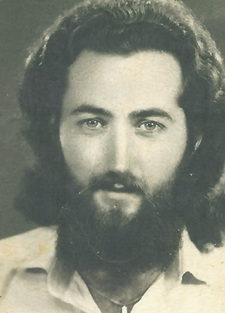The family of a former carpenter are trying to track down his former colleagues to find out what could have caused the asbestos-related cancer which led to his death. William Weaver, from Pontypool, died in March 2021, just five months after he was diagnosed with Mesothelioma – a disease which is more prevalent in the UK than anywhere else in the world.

Sadly, William’s illness progressed so rapidly he was unable to detail where he had come into contact with asbestos before he died – although he was able to tell his medical team, and son Richard, that he was exposed to asbestos dust at work. Now, on Action Mesothelioma Day (1 July) his family are hoping the local community can help them piece things together.
William’s son, Richard Weaver, said:
“We know dad undertook a 5-year carpentry apprenticeship with WA Davis after leaving school in 1953. He then spent some time after that completing his National Service and travelling the world. When he returned to Wales in 1962, he worked as a jobbing carpenter. He told me that, as part of this role he was required to cut asbestos sheet cladding to size. Cutting asbestos sheets triggers the release of asbestos fibres into the atmosphere, resulting in exposure to the deadly dust.”
William particularly recalled working on the construction of Nevill Hall Hospital in Abergavenny; the Ty Fry housing estate in Blaenavon; the County Hall in Cwmbran; the Llandegfedd Reservoir and flyovers in Newport town centre. We know that during this period William had worked for a number of companies including M J Gleeson; Thyssen Shaft Sinking Co (GB) Ltd; C Walmsley; Sir Robert McAlpine & Sons Ltd; Tersons Ltd; Wilson Lovatt & Sons Ltd; Truscon Ltd; The Cementation Co Ltd; Holland Hannen & Cubitta (Southern) Ltd; and E Turner & Sons Ltd.
Richard has now instructed specialist asbestos disease solicitor, Richard Green, at leading Welsh law firm, Hugh James, to help him investigate his father’s working conditions further.
The family need to know exactly what William was working on while employed by each individual company. They’re appealing for help from any witnesses who worked with William Weaver for any of the companies, or on any of the construction projects, listed. Even if people don’t remember William, any information provided about the working conditions at these construction sites could help his son’s quest for answers as to how his father was exposed to asbestos dust at work.



